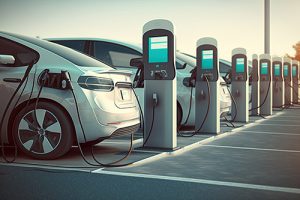Introduction Discover the promising advancements driving the Future of Electric Vehicles in 2024, from technological innovations to environmental benefits. The automotive industry has seen a monumental shift towards sustainable transportation, with electric vehicles (EVs) leading the charge. As we approach 2024, the future of electric vehicles looks brighter than ever, with groundbreaking advancements, increased accessibility,
Introduction
Discover the promising advancements driving the Future of Electric Vehicles in 2024, from technological innovations to environmental benefits. The automotive industry has seen a monumental shift towards sustainable transportation, with electric vehicles (EVs) leading the charge. As we approach 2024, the future of electric vehicles looks brighter than ever, with groundbreaking advancements, increased accessibility, and widespread adoption. This article explores the transformative journey of EVs, uncovering key trends, challenges, and opportunities shaping automotive innovation.
Expanding Charging Infrastructure

Image by: areadevelopment.com
The adoption of electric vehicles heavily relies on accessible charging infrastructure. In 2024, significant strides are being taken to expand global charging networks, ensuring seamless mobility for EV users. Governments and private entities are investing heavily in deploying fast-charging stations along highways, urban areas, and public parking facilities. This infrastructure expansion is vital for alleviating range anxiety and facilitating long-distance travel with electric vehicles.
Technological Innovations Driving the Future of Electric Vehicles
Rapid technological advancements are propelling the Future of Electric Vehicles forward. The year 2024 marks a pivotal moment in electric vehicle technology evolution. Manufacturers are pushing boundaries to enhance performance, efficiency, and user experience. Advancements in battery technology, including solid-state batteries and improved energy density, are extending EV range while reducing charging times. Additionally, AI-driven autonomous driving capabilities promise enhanced safety and convenience for passengers.
Market Dynamics and Consumer Adoption
Consumer preferences play a critical role in shaping the Future of Electric Vehicles. Market dynamics are key in driving consumer adoption and industry growth. In 2024, we witness a surge in consumer interest driven by environmental consciousness, government incentives, and declining EV prices. With automakers increasing production and introducing diverse electric models, consumers have more options, making the switch to electric vehicles more appealing than ever.
Environmental Sustainability Driving the Future of Electric Vehicles
The transition to electric vehicles signifies a new era of sustainability. It offers a viable solution to mitigate carbon emissions and combat climate change. By electrifying transportation, we reduce reliance on fossil fuels, curbing air pollution and preserving natural resources. In 2024, efforts are underway to integrate renewable energy sources like solar and wind into charging infrastructure, further enhancing electric vehicles’ eco-friendliness.
Overcoming Challenges in the Future of Electric Vehicles in 2024

Image by: progressive.com
Despite promising prospects, several challenges persist in mainstream electric vehicle adoption. Addressing range anxiety remains a priority, requiring expansion of charging infrastructure and development of high-capacity batteries. Affordability barriers also pose obstacles, particularly in emerging markets where upfront costs and limited incentives hinder EV adoption.
Frequently Asked Questions:
- How will electric vehicles change the world?
Electric vehicles offer a sustainable alternative to traditional vehicles, reducing greenhouse gas emissions and mitigating air pollution. Transitioning to electric mobility contributes to combating climate change and driving innovation in renewable energy sources.
- How long does it take to charge an electric vehicle?
Charging times vary based on the station’s power output and battery capacity. Fast-charging stations can replenish a significant portion of the battery in under an hour, while conventional methods may take several hours.
- Are electric vehicles environmentally friendly?
Yes, electric vehicles significantly reduce air pollution and reliance on fossil fuels, making them environmentally friendly compared to traditional vehicles.
- What incentives are available for electric vehicle buyers?
Governments worldwide offer incentives such as tax credits, rebates, and congestion charge exemptions to promote electric vehicle adoption and encourage sustainable mobility.
Conclusion
The Future of Electric Vehicles holds immense promise. With technological innovations, expanding infrastructure, and growing consumer acceptance, electric vehicles are reshaping the automotive landscape, ushering in an era of cleaner, greener, and more efficient mobility.
















